How to Build the Best Sales Content Strategy for B2B

If you’re a B2B company, there’s a good chance you have a long sales cycle. Particularly for those of us who target large enterprises, the length of our sales cycle sometimes extends over 6 months or a year!
But here’s the cold hard truth (that leaves some of us in utter agony!)…
Even after months and months of dedicated lead nurturing campaigns and content marketing efforts, a signed contract isn’t always guaranteed. Why, oh WHY didn’t it work out between us?

Every business will see an ideal client slip through the cracks. It happens to the best of us.
However, if you’ve had the unfortunate experience of losing a prospect more than once, then we need to face the facts: There’s room for improvement in your sales strategy.
Guide Overview
In this ultimate guide, we’re going to give you the rundown on sales content strategies and help you create a content strategy that will become your new BEST FRIEND.
- What is a sales content strategy?
- Marketing content vs sales content strategy: What’s the difference?
- Types of sales content
- How does sales content create connection?
- How a sales content strategy improves the decision-making process
- Get started: 5 steps to develop your own strategy
- How to develop ROI for your sales content strategy
Ready to bolster your ROI and bring in more signed contracts? Let’s jump right in!
What Is a Sales Content Strategy?
A sales content strategy for B2B is a master game plan that develops tailored content to answer the unique pain points, challenges, and goals of the prospective client. It serves as a guide to help the client navigate their way down the sales funnel and make a decision.
Therefore, a good sales content strategy will span the entire sales funnel, from the moment the lead enters the buyer’s journey to the closing deal.
So, what are the moving parts of a good sales content strategy?
Believe it or not, the main moving part of a sales content strategy is routine content auditing.
If you have existing sales content, there’s NO NEED to scrap it. We’re not trying to reinvent the wheel here! We’ll touch more on this later.
But, in essence, a great sales content strategy ideates, develops, tests, and organizes the production of content for your sales funnel. It focuses on each phase of the funnel, all while integrating well with your overall marketing content plan.
Routine auditing of sales content will help you identify gaps in your current strategy. You will discover what needs to be prioritized and where you need to build stronger content.
Lastly, metrics are a big moving part of this strategy.
You need metrics in place to understand what’s working and what needs to be fixed.
Before we get too deep into this, let’s take a quick break to answer that BIG question on your mind…
Marketing Content vs Sales Content Strategy: What’s the Difference?

At this point you might be wondering, “But is marketing content really that different than sales content?”
Sales content is crafted with the singular aim of captivating the precise prospect your sales team is actively engaging with. It is meticulously tailored to address the unique pains and needs of each ideal customer profile, ensuring resonance and relevance throughout the sales journey.
Unlike marketing content, which is typically used to spread awareness of your brand and attract all kinds of readers to your page, sales content is planned specifically for your target prospect. It is utilized by leads later on in their journey to make an informed decision about doing business with you.
Let us break it down a little bit more.
Marketing content strategy:
In general, here are some popular marketing content strategy used across industries:
- Large scale campaigns that target and attract leads to your business
- Deployed during the awareness phase of the buyer’s journey
- Campaigns are ran on broadcast-type channels like social media or Google Ads
- Example: TOFU paid ads to spread awareness
Sales content strategy:
On the other hand, sales content strategy can include the following:
- Highly specific campaigns that hone in on the needs of each prospect
- One-on-one tailored content
- Develops and utilizes persona based messaging
- Used by prospects who are further down the sales funnel
- Key to the prospect’s decision-making process
- Example: BOFU exclusive webinar with the CEO to directly answer a prospect’s pain point or concern
Combining Marketing & Sales: Account-Based Marketing
As a B2B brand, you’re probably familiar with the account based marketing (ABM) approach. Rather than casting a large net to capture as many leads as possible, you prefer to create highly specific campaigns that target particular accounts.
We call these accounts “the prize fish.”
Once a prize fish has been hooked through an ABM campaign, sales content is used to reel them in.
In other words, quality sales content is tailored to each individual client to draw them closer to your business. One-on-one, persona-based messaging and personalized content is critical if you want your content to encourage prospect engagement.
So, what types of sales content produce engagement?
At this point, you’re probably wondering, “But what are the EXACT types of sales content I can use?
Don’t worry, we’ve gone ahead and created an in-depth list of popular sales content for you to reference:
Types of sales content:
- One-sheets
- Educational videos
- Special presentations
- Case studies
- Blog posts tailored to the interests of your clients
- Webinars (particularly featuring industry leaders & experts in your business)
- LinkedIn shares
- Direct & personalized emails from leaders in your business
- Sales decks
- Live demos
- Free trials
Every business’s sales content will differ. The campaigns you choose to run must mesh well with the industry you’re in and connect with the clients you serve.
This leads us to the next BIG question…
Now that you know the goal of a sales content strategy, it’s time to dive into the different types of sales content that develop prospect engagement.
Great B2B sales content include one-on-one, personalized, and tailored messages that really center around the client’s needs. In essence, it is the fire that fuels your account based campaigns.
Next, let’s dive in to how you can create a meaningful connection with your client!
How Does Sales Content Create Connection?
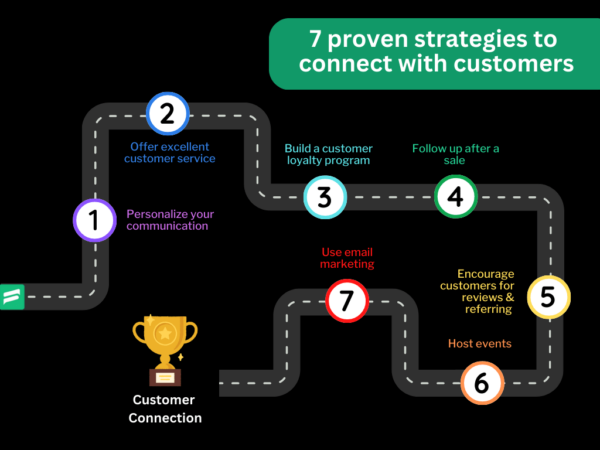
Like all good content, your sales content must prioritize the needs of the client.
Remember how we said that your sales content campaigns must connect with the clients you serve? Well, great sales content that centers around the client will help your prospects connect with your brand.
On the contrary, if YOU are the main focus in your sales content and they are unable to connect with your brand, then they most likely won’t trust you enough to follow through with a signed contract.
This is why the prioritization of your prospects’ needs is the key to a successful sales content strategy. After all, when someone feels like their pain points have been answered and their needs have been met, it’s a no-brainer to make the right decision – which is to do business with you!
Speaking of making decisions…
How a Sales Content Strategy Improves the Decision-Making Process
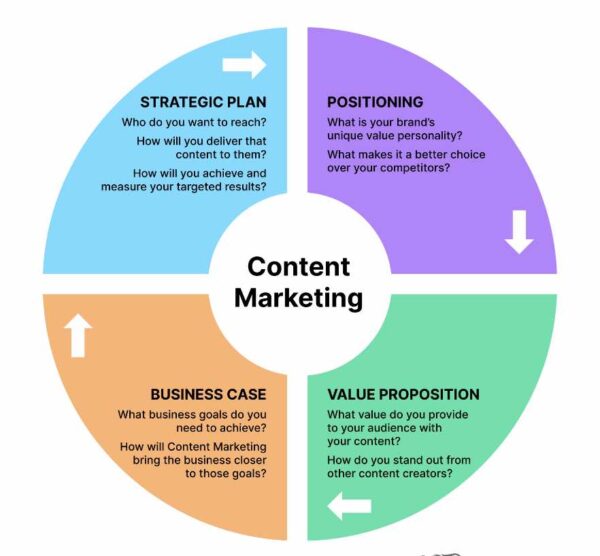
The process a company must take to make the decision to do business with a B2B brand is often lengthy and stressful.
Some B2B transactions are worth hundreds of thousands of dollars (if not MORE!). Not to mention, the type of product, service, or partnership your business offers might take a long time to onboard.
This is yet another barrier the prospect faces during the decision-making process. That’s why it’s absolutely vital for you to understand the sales funnel from the buyer’s perspective.
Put Yourself in Their Shoes
You know that old saying, “Put yourself in someone else’s shoes?”
This is especially true when it comes to creating a quality sales content strategy.
It’s all about knowing your client’s needs as they make their way through each stage of the sales funnel. That way, they can come to a strong conclusion that you are, in fact, the right brand to do business with.
Remember, once you understand this, you’ll be able to construct a sales content strategy that reflects the true desires of your prospects. AKA: The secret to connection, engagement, and a decision that benefits both of you
So, how do you develop a sales content strategy that meets the needs of the prospect?
Get Started: 5 Steps to Develop a Complete Sales Content Strategy
Luckily for you, we’ve come up with the 5 key steps to create a successful sales content strategy.
Follow these guidelines, and you’ll be on your way to creating strong sales content that will lead your prospect to make the right decision!
1. Identify Funnel Gaps
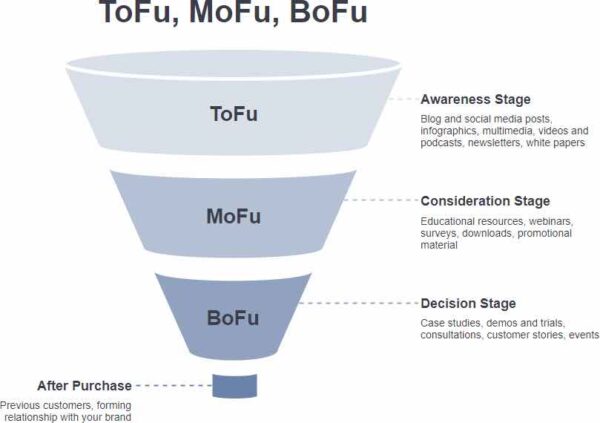
Rule #1: Get organized. Your sales content strategy needs to follow the buyer’s journey. Your buyer’s journey directly correlates with all of your sales funnel stages and is impacted by the type of content you offer in each one.
When you take the time to 1. Organize your sales content in the funnels and 2. Identify any gaps within each funnel stage, you will be able to track the success of the buyer’s journey with ease.
Gaps in the funnel may include:
- A lack of content at a certain stage
- Content that doesn’t actually match the stage (ex. Awareness content that is being sent to the bottom of the funnel leads – these prospects don’t need to see this!)
- Failure to provide content that meets the needs of the prospect
- Valueless content that the prospect doesn’t care about
Keep in mind that the most powerful part of your sales content strategy is located in the BOFU stage, or the bottom of the funnel. This is where your prospects make their final decision on whether to do business with you or not. But, this doesn’t mean you should slack off on the other stages of the funnel.
Let’s take a closer look at the type of content you should provide in each stage.
Top of the Funnel (TOFU)
TOFU ads include all of the marketing content you deploy to spread awareness of your brand and invite leads to interact with your business. Outreach campaigns and the identification of ideal customer profiles usually takes place at the top of the sales funnel.
During this phase, be sure to measure active engagement of new accounts as well as reach.
Measure the following:
- What content is successfully grabbing the attention of your target accounts in this stage?
- Are there any content gaps or desired leads that are slipping through the cracks?
- Are your outreach campaigns actually working?
If you already have an account based marketing approach, then your sales team should be familiar with the specific clients you’re targeting. The type of content your sales team sends to the accounts should match this stage of the game and can include blog posts, informative e-books, and white papers.
Pro-Tip:
Remember, content that spreads brand awareness and builds trust with your company is highly encouraged at this point.
Your sales team has their foot in the door with an ideal account – good!
Now that the prospect is aware of your brand and is interested, they enter into the middle of the sales funnel. At this point, the client is actively looking for a solution to a problem (that YOU can hopefully solve for them) and they’re creating a list of required capabilities to alleviate this pain point.
Next, you’re stepping into the stage where your content needs to provide immense value for the prospect. They WILL be looking for quality value. And if they don’t get it from you, there is a good chance they’ll get it from a competitor.
So, you need to make sure your sales content is on its A game!
Wondering what else is important at this stage?
Relationship building and lead nurturing campaigns are also critical. You can use content like educational videos, entertaining podcasts, exclusive webinars, and comparison guides to take the relationship to the next level.
Pro-tip:
If your offering is complicated or has a long onboarding phase, be sure to explain it in as simple terms as possible during this stage. This will make your prospect feel more at ease to follow through with the buying process.
Bottom of the Funnel (BOFU)
Listen up!
Your prospect has just entered into the key decision-making stage of their buyer’s journey! This is called the bottom of the sales funnel, and it’s where you convert prospects into revenue.
During this stage, you MUST hone in on your client’s fears and frustrations.
Are they hesitant to do business with you? If so, WHY? How can you alleviate their worries?
Your sales team should have simple, straightforward answers to the concerns of the account’s internal team (CEO, CFO, CMO, core managers, etc.), build urgency, show the value of your offering, and explain the cost of inaction (or what the client will lose out on if they DON’T do business with you).
How do you do this?
By creating sales content that has strong call-to-actions, gets to the bottom of any push backs or mental barriers, and communicates how VALUABLE your business is for the client.
Pro-Tip:
Live demos, sales decks, free trials or demos, and highly personalized sales messaging will help the prospect make an informed decision to work with your company.
2. Align Your Sales Message
Now that you know what kind of sales content you need during each stage in the buyer’s journey, you need to align your sales message across your team
First, get your sales and marketing teams on the same page. Collaborate. This is a full team effort!
Once all hands are on deck, it’s time to align your sales message with the needs of the prospect. While you probably have a general idea of what your target accounts’ pain points are, don’t forget that each account is an individual. Your sales message should match the specific concerns, problems, desires, and frustrations of each client.
Search the Mind of the Prospect
Why would (or why SHOULD) your dream lead be interested in doing business with YOU?
From now on, you need to put the client first. Put yourself in their shoes.
What would it look and feel like if you guys switched places? What if YOU were the one being led down the sales funnel? What would your pain points, challenges, and goals be?
If you want to best serve the client, you need to think like the client. Find every opportunity possible to serve as your prospect’s guide.
For instance, tailor special sales messages that speak directly to their desires. Look for unique opportunities to fill in sales funnel gaps with valuable content that your clients find extremely useful, engaging, and exciting!
3. Create High-Value Content for High-Value Accounts
In order to produce a strong sales message, your sales and marketing teams should prioritize high quality content production.
You want to give your prospects USEFUL information that will help them face their problems NOW.
This kind of content can come in many forms, including Q&A webinars with industry leaders, informative case studies that showcase similar or like-minded companies, and live training and demos.
By and large, your prospects are more likely to do business with you if they can relate to the clients you have served in the past. If they can picture themselves receiving the same benefits as your other clients, then they will be more than excited to take the relationship to the next level. #Socialproof!
Pro-Tip
The most successful sales content strategies always position your brand as the guide. It is your job to lead the prospect to the right decision, not blab endlessly about how amazing your business solution is.
The prospect can come to that conclusion themselves. Instead, your content should take a customer-centric approach, not the other way around!
More specifically, you should be asking yourself: Does my current sales strategy put the client first?
4. Audit, Audit, Audit!
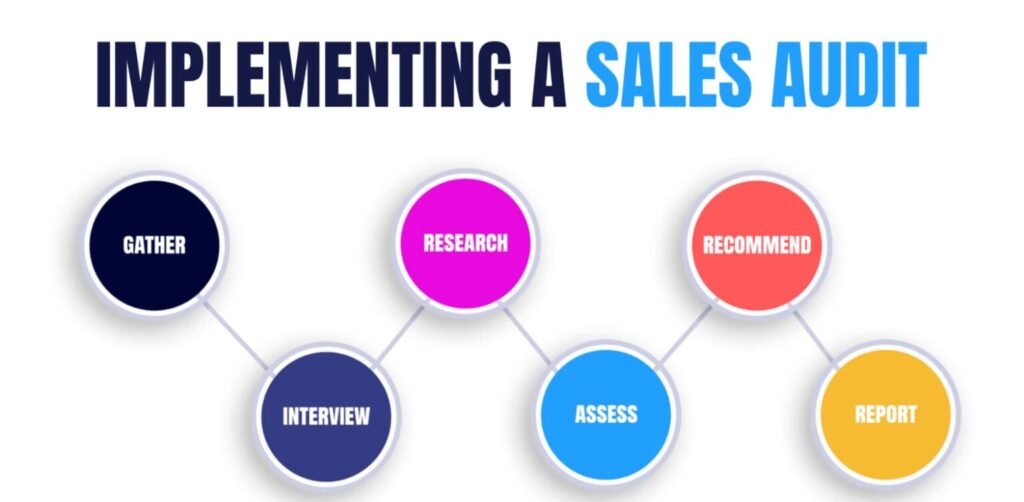
Did you know that you can never have too many audits?
It’s true! The point of the sales audit is to find any gaps in the sales funnel and take action to fill these holes with valuable content, and the more detailed audits you have, the better.
As a result, this will improve your sales content strategy over time and increase conversion rates.
Gather Performance Metrics
For starters, map out all of the content in each phase of the sales funnel and determine which areas need improvement.
If you have content that has little to no client engagement, get rid of it. On the contrary, if you have content that is performing really well, find ways to offer more content like that! And, of course, determine WHY it is performing so well.
Furthermore, gather conversion rate metrics at pivotal points in the buyer’s journey. What is working and what isn’t?
Overall, best way to do this is to perform bi-annual sales content audits to discover your top-performing content and increase conversion rate.
Pro-Tip:
Ask yourself the following questions to help determine what needs to stay the same and what needs to change in your strategy:
- Did you see a big dip in engagement during the transition from MOFU to BOFU? Hmm… What seems to be the problem?
- Did performance skyrocket when you offered a one-on-one Q&A session with your CEO? Wow… Prospects love this type of content!
- How are your blogs performing? Interesting, this specific blog post was a huge hit. Look at all of those shares and views!
While your questions may vary, these are great ones to ask yourself–no matter your industry!
5. Adapt Your Strategy
Congratulations!
You now have everything you need to develop a strong sales content strategy.
However, it’s up to you and your sales team to get to the nitty-gritty details of each stage in your sales funnel.
Remember: you need to consistently analyze and adapt your strategy to fit modern trends in the industry you serve. You also need to always offer up-to-date content that adds value to your prospects!
When you take action to always put your clients’ needs first and act as their guide, you will create a genuine connection that will leave them saying YES to a deal with you.
Sounds great, right?
How to Develop ROI for Your Sales Content Strategy
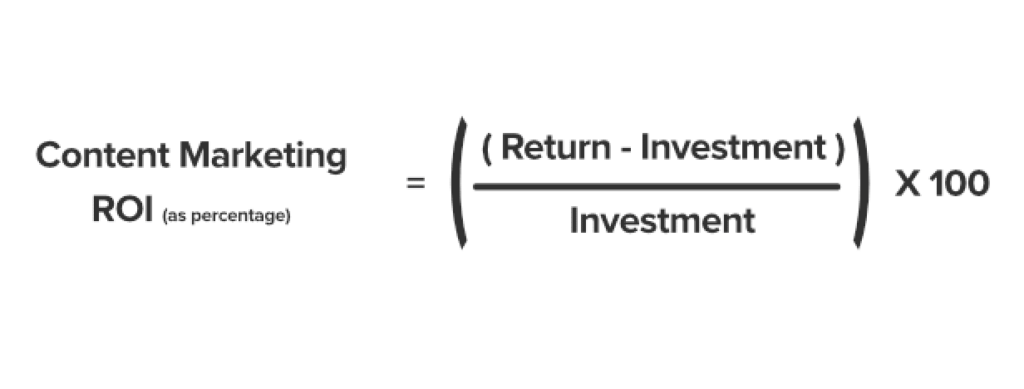
Lastly, when it boils down to sales content ROI, it’s always a safe bet to review the impact of your sales funnel metrics. Keep an eye on:
- Client close rate
- Net promoter score
- Client satisfaction
- The time it took to close a deal
- Cost to produce sales content
- Revenue generated from each deal
Additionally, you can always reach out to your current clients and ask them what kind of content they find most valuable. Always ask WHY they prefer a specific type of content. Then, add more of that content to your sales content strategy!
Final Thoughts
All in all, a sales content strategy is a great asset for your B2B company.
When you collaborate your sales and marketing teams, find your prospects’ core needs, and generate high-value content that satisfies these needs – you will take the guesswork out of the decision-making process for your clients.
Connection. Engagement. Trust. Serve your buyers better and close deals faster! That’s what a sales content strategy is all about.
Looking for a full-service digital marketing team that will help you develop a successful sales content strategy?
Partner with us! We’ll create a strategy that aligns with your buyer’s needs and generates more deals for your business. Connect with us for a FREE B2B strategy session!








